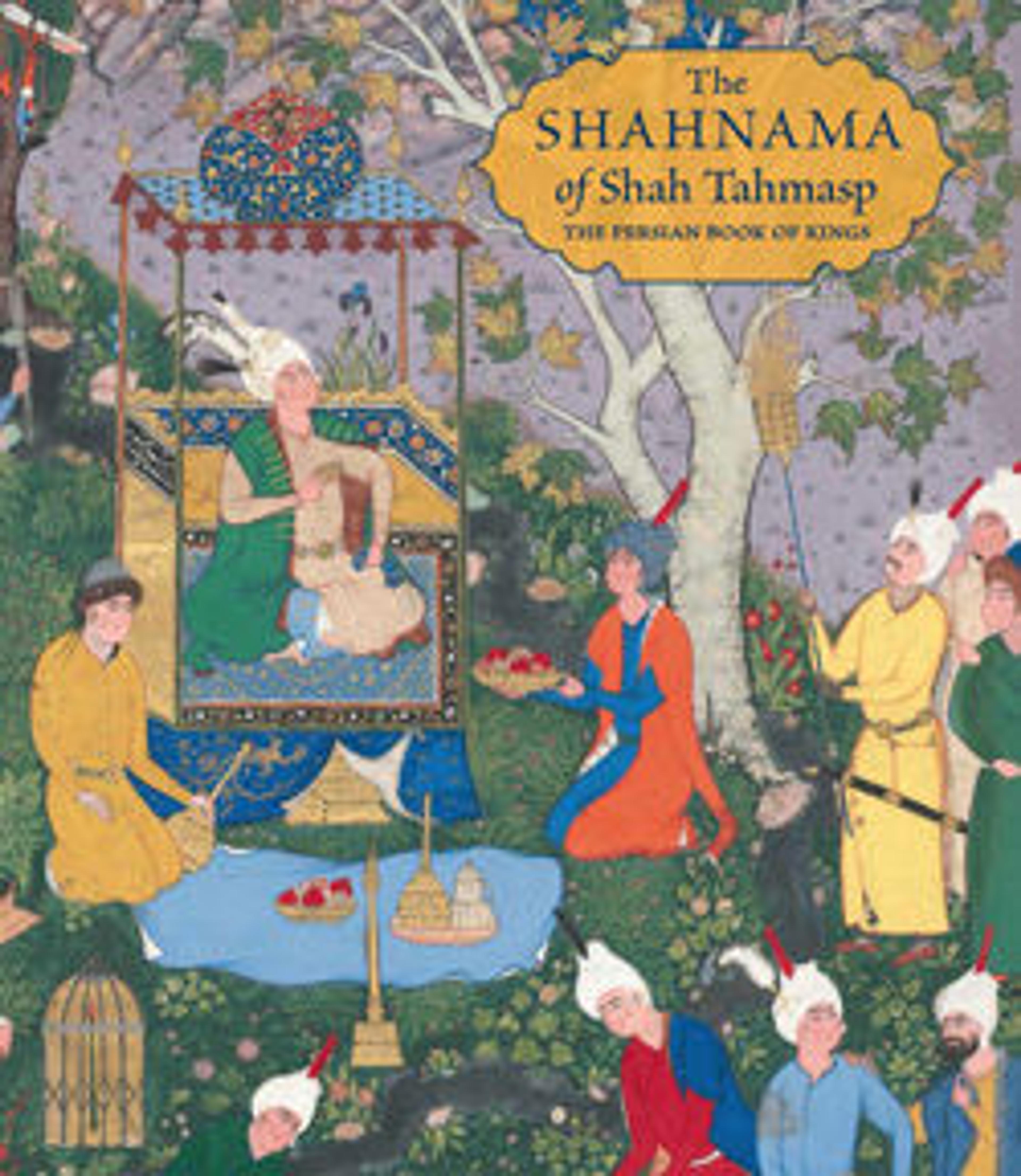"Rustam Slays Isfandiyar", Folio 466r from the Shahnama (Book of Kings) of Shah Tahmasp
In another confrontation Rustam and Rakhsh are injured and retreat. Now Zal intervenes and summons the simurgh, his foster mother, who provides healing feathers and a special arrow. Once again Rustam and Isfandiyar meet in single combat, but thls time, though Isfandiyar's arrows miss their mark, Rustam's pierce the prince's eyes. As Isfandiyar lies dying, both he and Rustam know that this murder, no matter how it was provoked, will bring trouble down on Rustam's head.
Artwork Details
- Title: "Rustam Slays Isfandiyar", Folio 466r from the Shahnama (Book of Kings) of Shah Tahmasp
- Author: Abu'l Qasim Firdausi (Iranian, Paj ca. 940/41–1020 Tus)
- Artist: Painting attributed to Qasim ibn 'Ali (Iranian, active ca. 1525–60)
- Date: ca. 1525–30
- Geography: Made in Iran, Tabriz
- Medium: Opaque watercolor, ink, silver, and gold on paper
- Dimensions: Painting:
H. 7 3/4 in. (19.7 cm)
W. 6 11/16 in. (17 cm)
Entire Page:
H. 18 5/8 in. (47.3 cm)
W. 12 5/8 in. (32.1 cm) - Classification: Codices
- Credit Line: Gift of Arthur A. Houghton Jr., 1970
- Object Number: 1970.301.55
- Curatorial Department: Islamic Art
More Artwork
Research Resources
The Met provides unparalleled resources for research and welcomes an international community of students and scholars. The Met's Open Access API is where creators and researchers can connect to the The Met collection. Open Access data and public domain images are available for unrestricted commercial and noncommercial use without permission or fee.
To request images under copyright and other restrictions, please use this Image Request form.
Feedback
We continue to research and examine historical and cultural context for objects in The Met collection. If you have comments or questions about this object record, please contact us using the form below. The Museum looks forward to receiving your comments.
